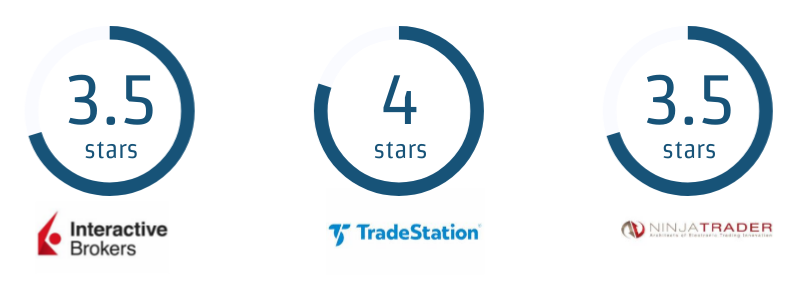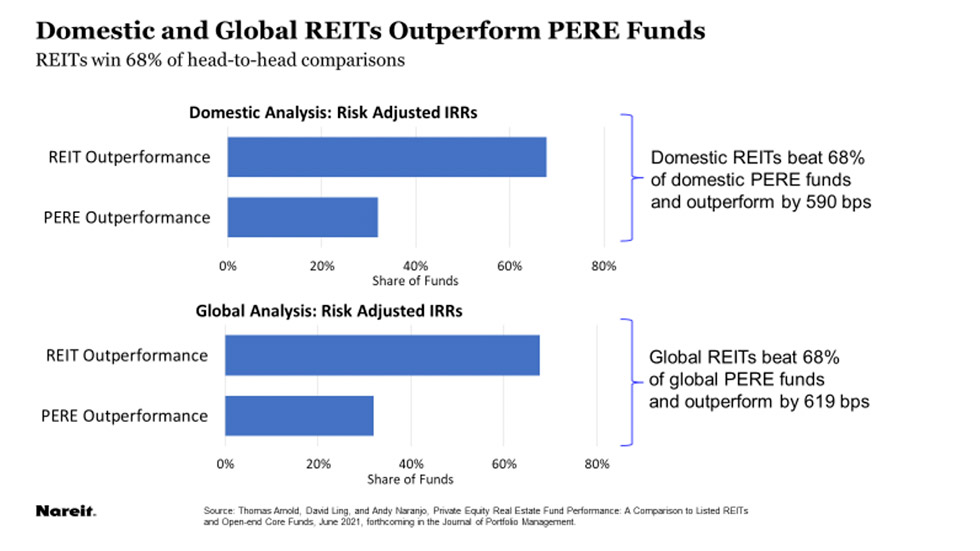
The first REIT was established in 1960. The law was known as Public Law 86-779, sometimes referred to as the Cigar Excise Tax Extension, and it was passed to provide equal opportunity to all investors in real estate. American Realty Trust was the name of the first REIT. Its founder was Thomas J. Broyhill who was a cousin to U.S. Joel Broyhill, the Virginia congressman. Broyhill, who had worked as a realtor, was the primary supporter of REITs.
Investing in a REIT
Before you invest in a real estate investors trust, you should familiarize yourself with REITs, which are publicly traded companies. These can be purchased through an exchange-traded fund or a brokerage account. These companies have historically performed well, and most investors look for companies in the FTSE NAREIT Equity REIT Index, which is a free-float adjusted market capitalization-weighted index of U.S. equity REITs.

Benefits to investing in a REIT
Real estate investors trusts (REITs), are great for diversifying your portfolio and making passive income. Most REITs distribute at least 90% to shareholders as dividends. REITs are liquid and can be purchased and sold at a click. They also tend to pay higher dividends which is a benefit for income-oriented investors.
Investing in a REIT through a retirement account
A retirement account can be used to invest in a REIT. This is a great way for you to increase your real estate exposure. This type is not recommended for everyone. Investing in one REIT is the same as buying stock in one company. While this can add another sector to your portfolio, it does not necessarily create diversification. For more information on real estate options, contact your employer's benefits department.
Fundrise eREITs
eREITs is a term used for real estate investors trusts. Their shares are taxed at each investor's level and not at the company. Fundrise eREITs are no exception, however. The company will instead of making taxable distributions of units to holders, it will make a high-yield cash distribution at each quarter's close. This can be a great way to generate additional income for investors who are looking for a steady stream of income.

The growth of REITs
REITs are a way to invest in properties and increase interest in real property. REITs' business model is based on raising equity and issuing debt. Cheap capital was difficult to get during the credit crisis. Investors are now wary of rising interest rates. But global rates remain at historic lows. REITs, which are highly sensitive to changes of interest rates, are an excellent diversifier for investors' equity portfolio.
FAQ
How Share Prices Are Set?
Investors set the share price because they want to earn a return on their investment. They want to make profits from the company. They purchase shares at a specific price. If the share price increases, the investor makes more money. If the share value falls, the investor loses his money.
Investors are motivated to make as much as possible. This is why they invest in companies. This allows them to make a lot of money.
What is the trading of securities?
The stock market allows investors to buy shares of companies and receive money. In order to raise capital, companies will issue shares. Investors then purchase them. Investors then sell these shares back to the company when they decide to profit from owning the company's assets.
The price at which stocks trade on the open market is determined by supply and demand. When there are fewer buyers than sellers, the price goes up; when there are more buyers than sellers, the prices go down.
There are two options for trading stocks.
-
Directly from the company
-
Through a broker
What are some advantages of owning stocks?
Stocks are less volatile than bonds. If a company goes under, its shares' value will drop dramatically.
If a company grows, the share price will go up.
For capital raising, companies will often issue new shares. Investors can then purchase more shares of the company.
Companies use debt finance to borrow money. This allows them to borrow money cheaply, which allows them more growth.
When a company has a good product, then people tend to buy it. The stock will become more expensive as there is more demand.
As long as the company continues to produce products that people want, then the stock price should continue to increase.
Is stock marketable security?
Stock is an investment vehicle that allows you to buy company shares to make money. This is done through a brokerage that sells stocks and bonds.
You could also choose to invest in individual stocks or mutual funds. There are over 50,000 mutual funds options.
The difference between these two options is how you make your money. Direct investment allows you to earn income through dividends from the company. Stock trading is where you trade stocks or bonds to make profits.
Both of these cases are a purchase of ownership in a business. However, if you own a percentage of a company you are a shareholder. The company's earnings determine how much you get dividends.
Stock trading allows you to either short-sell or borrow stock in the hope that its price will drop below your cost. Or you can hold on to the stock long-term, hoping it increases in value.
There are three types of stock trades: call, put, and exchange-traded funds. Call and put options let you buy or sell any stock at a predetermined price and within a prescribed time. ETFs can be compared to mutual funds in that they do not own individual securities but instead track a set number of stocks.
Stock trading is a popular way for investors to be involved in the growth of their company without having daily operations.
Stock trading is not easy. It requires careful planning and research. But it can yield great returns. This career path requires you to understand the basics of finance, accounting and economics.
How can I find a great investment company?
You want one that has competitive fees, good management, and a broad portfolio. Fees vary depending on what security you have in your account. Some companies charge nothing for holding cash while others charge an annual flat fee, regardless of the amount you deposit. Others charge a percentage on your total assets.
It is also important to find out their performance history. If a company has a poor track record, it may not be the right fit for your needs. Avoid low net asset value and volatile NAV companies.
Finally, it is important to review their investment philosophy. To achieve higher returns, an investment firm should be willing and able to take risks. If they are not willing to take on risks, they might not be able achieve your expectations.
Statistics
- For instance, an individual or entity that owns 100,000 shares of a company with one million outstanding shares would have a 10% ownership stake. (investopedia.com)
- Ratchet down that 10% if you don't yet have a healthy emergency fund and 10% to 15% of your income funneled into a retirement savings account. (nerdwallet.com)
- "If all of your money's in one stock, you could potentially lose 50% of it overnight," Moore says. (nerdwallet.com)
- The S&P 500 has grown about 10.5% per year since its establishment in the 1920s. (investopedia.com)
External Links
How To
How to open a Trading Account
The first step is to open a brokerage account. There are many brokerage firms out there that offer different services. Some have fees, others do not. Etrade, TD Ameritrade Fidelity Schwab Scottrade Interactive Brokers are some of the most popular brokerages.
Once you have opened your account, it is time to decide what type of account you want. One of these options should be chosen:
-
Individual Retirement Accounts (IRAs).
-
Roth Individual Retirement Accounts (RIRAs)
-
401(k)s
-
403(b)s
-
SIMPLE IRAs
-
SEP IRAs
-
SIMPLE SIMPLE401(k)s
Each option comes with its own set of benefits. IRA accounts provide tax advantages, however they are more complex than other options. Roth IRAs allow investors deductions from their taxable income. However, they can't be used to withdraw funds. SIMPLE IRAs are similar to SEP IRAs except that they can be funded with matching funds from employers. SIMPLE IRAs have a simple setup and are easy to maintain. They allow employees and employers to contribute pretax dollars, as well as receive matching contributions.
Finally, you need to determine how much money you want to invest. This is also known as your first deposit. Most brokers will give you a range of deposits based on your desired return. Depending on the rate of return you desire, you might be offered $5,000 to $10,000. The lower end of the range represents a prudent approach, while those at the top represent a more risky approach.
Once you have decided on the type account you want, it is time to decide how much you want to invest. Each broker sets minimum amounts you can invest. These minimum amounts can vary from broker to broker, so make sure you check with each one.
You must decide what type of account you want and how much you want to invest. Next, you need to select a broker. Before selecting a brokerage, you need to consider the following.
-
Fees - Make sure that the fee structure is transparent and reasonable. Brokers will often offer rebates or free trades to cover up fees. Some brokers will increase their fees once you have made your first trade. Do not fall for any broker who promises extra fees.
-
Customer service - Find customer service representatives who have a good knowledge of their products and are able to quickly answer any questions.
-
Security - Choose a broker that provides security features such as multi-signature technology and two-factor authentication.
-
Mobile apps: Check to see whether the broker offers mobile applications that allow you access your portfolio via your smartphone.
-
Social media presence. Find out whether the broker has a strong social media presence. It may be time to move on if they don’t.
-
Technology - Does this broker use the most cutting-edge technology available? Is the trading platform simple to use? Are there any glitches when using the system?
Once you have decided on a broker, it is time to open an account. Some brokers offer free trials while others require you to pay a fee. After signing up, you will need to confirm email address, phone number and password. Next, you'll have to give personal information such your name, date and social security numbers. The last step is to provide proof of identification in order to confirm your identity.
Once verified, your new brokerage firm will begin sending you emails. These emails contain important information and you should read them carefully. For instance, you'll learn which assets you can buy and sell, the types of transactions available, and the fees associated. Track any special promotions your broker sends. These could be referral bonuses, contests or even free trades.
Next, open an online account. An online account can usually be opened through a third party website such as TradeStation, Interactive Brokers, or any other similar site. Both sites are great for beginners. When opening an account, you'll typically need to provide your full name, address, phone number, email address, and other identifying information. Once you have submitted all the information, you will be issued an activation key. To log in to your account or complete the process, use this code.
You can now start investing once you have opened an account!